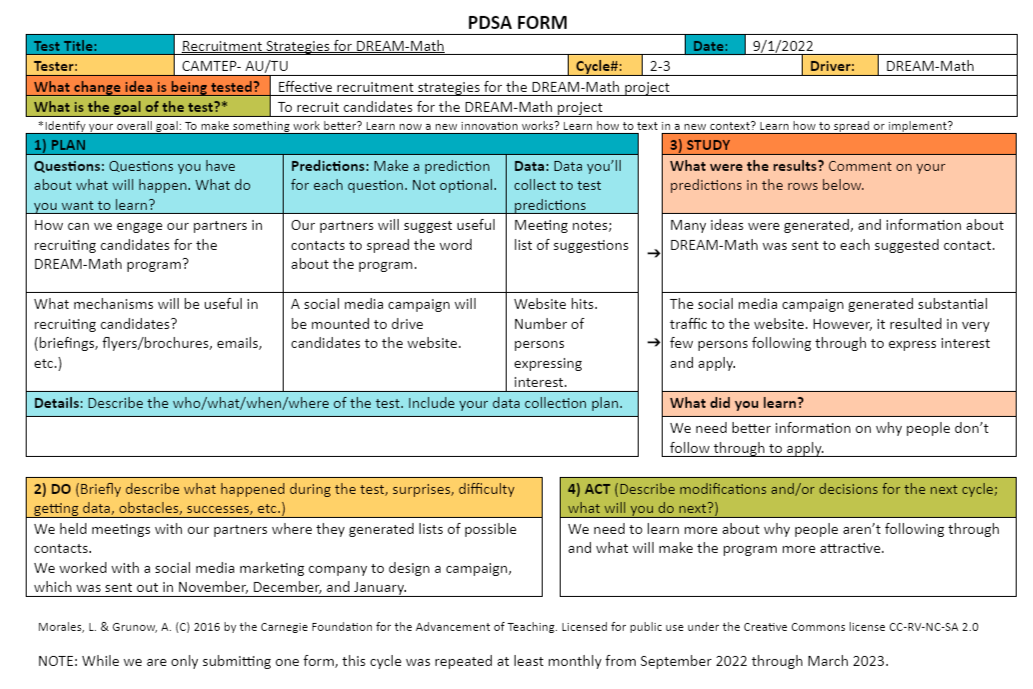
By Dana Pomykal Franz, PhD, and Marilyn Strutchens, PhD, MTEP 2.0 Research Hub members
PDSA (Plan-Do-Study-Act) Cycles are an integral part of transforming our programs. Across the MTEP 2.0 teams, the PDSA cycles are varied and highlight all the types of improvement work that occurs across the teams. Recruitment and retention or some aspect of program improvement (course redesign, program realignment, and program augmentation) are common themes across the teams, but PDSA cycles also focus on team growth, new credentialing of teachers, professional development for teachers, and equitable practices.
The blank PDSA Cycle form is an excellent tool to help capture the work of your team. The example from Central Alabama demonstrates one team’s enactment of the PDSA cycle for continuous improvement. The PDSA cycle shows they identified a problem (change idea) that was actionable, gathered information (do), and then identified what they learned (study) and still need to learn (act).
Some interesting results and actions:
After our plan-do-study-act cycle, we continued to try different ways of attracting possible scholars into the DREAM-Math program. Some of the recruitment strategies that we used include the following:
- We worked with the Auburn Alumni Association to send out an email to alumni in qualifying majors.
- We made an in-person visit to Alabama State University, Montgomery, to share information about the program with their juniors and seniors in mathematics-intensive majors.
- We began outreach to churches, meeting with two convenings of clergy which resulted in presentations at four church services in diverse communities in the east Alabama region, including the communities of Opelika, Millbrook, Montgomery, and Tuskegee. These presentations generated a number of leads.
- We held monthly online information meetings beginning in October 2023 as a way to engage with those interested in the program.
- We contacted university and private tutoring centers to spread the word to their tutors and the learning assistants project at Auburn University.
- We passed out flyers to students in senior mathematics classes.
- We explored outreach to local military bases, which proved less fruitful since most of the potential candidates already had funding under the GI Bill.
- We tweaked the advertising plan on social media to more directly target STEM professionals
As one can see, we have explored a number of ways to recruit people into our program. Some have been fruitful, and some have not. Using the PDSA cycle as a tool to launch our campaign helps us to keep in mind the main questions of the PDSA cycle with each new strategy, thus enabling us to think about which efforts are fruitful versus which are not. We can then determine which efforts we need to abandon and we should keep using or tweaking.